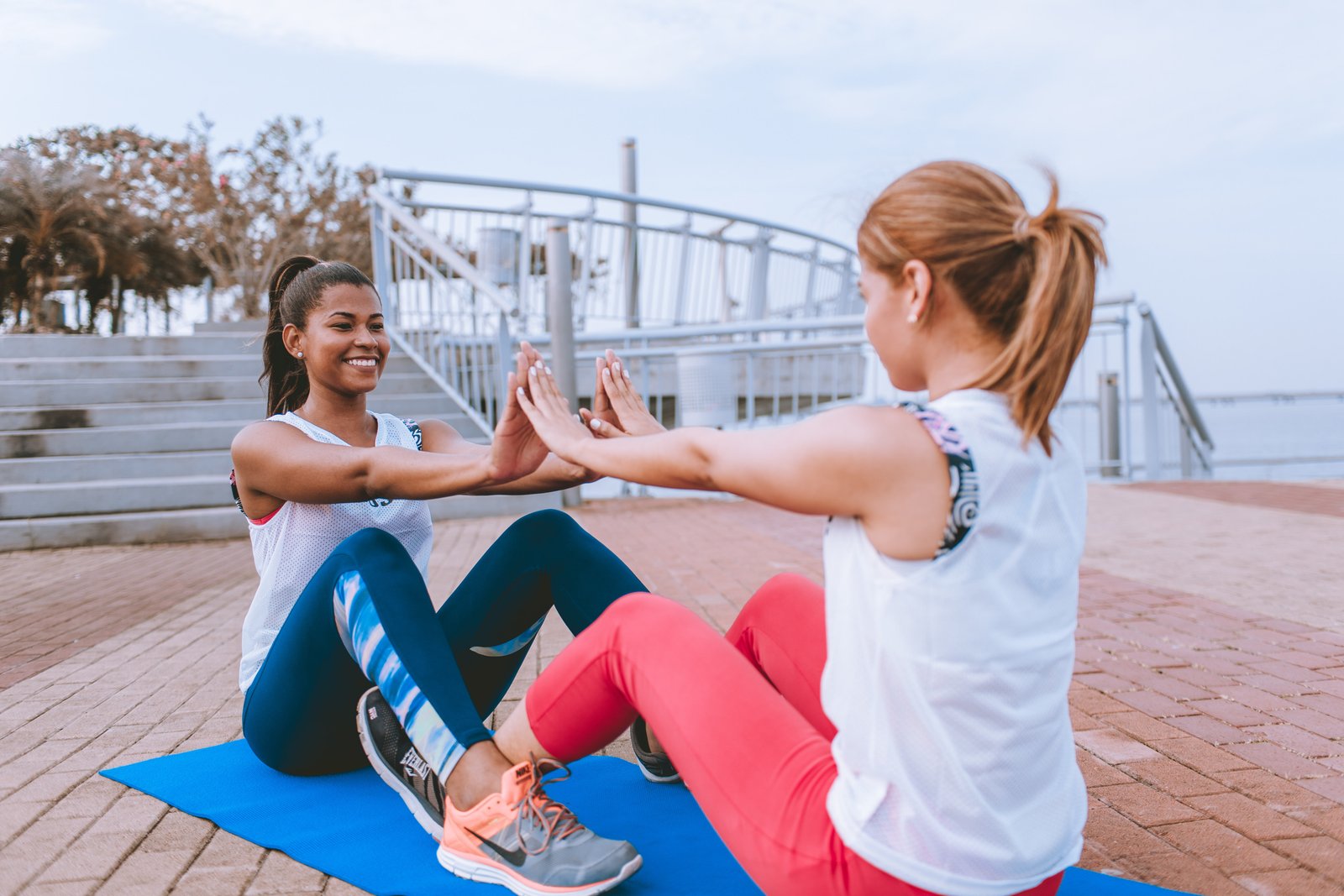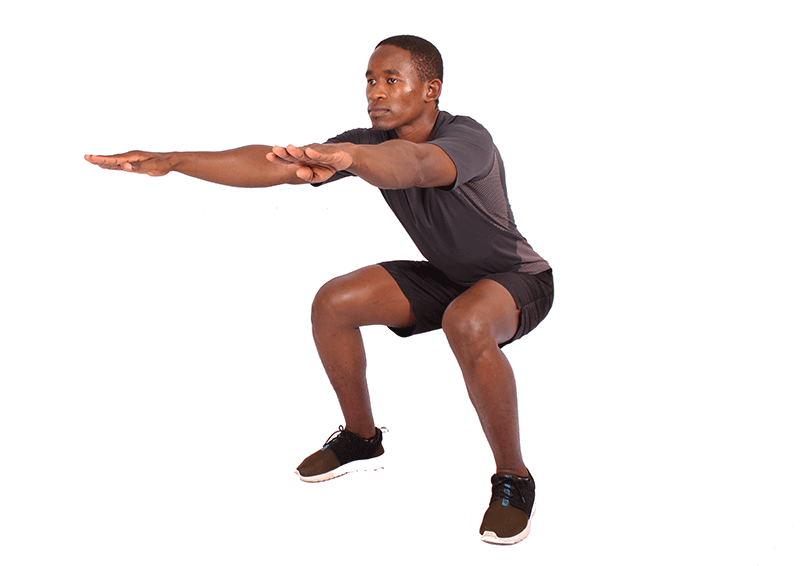Protecting Knees During Exercise: Your Key to a Stronger, Healthier You! Your knees are the unsung heroes of your workouts, and it’s time to give them the care they deserve. In this guide, we’ll unlock the secrets to safeguarding your knees during all types of exercise, so you can push your limits without the worry of injury. Let’s dive into the world of knee protection, stay active, and keep those knees going strong. Ready to make your workouts both powerful and pain-free?
Table of Contents
Importance of knee protection
The importance of knee protection cannot be overstated when it comes to exercise. Our knees are crucial joints that support our body weight and allow us to perform various movements. Without proper protection, the knees are susceptible to injuries such as strains, sprains, and even more serious conditions like ligament tears. By wearing knee pads or using other forms of knee protection, we can minimize the risk of these injuries and ensure the longevity of our knee health. Additionally, knee protection can also help reduce discomfort and pain during and after exercise, allowing us to maintain a consistent workout routine. Therefore, it is essential to prioritize knee protection to prevent any potential setbacks and maintain optimal physical performance.
Common knee injuries
Common knee injuries can occur due to various reasons, such as overuse, sudden impact, or incorrect form during exercise. Some of the most common knee injuries include ligament sprains, meniscus tears, and patellar tendonitis. Ligament sprains occur when the ligaments that support the knee joint are stretched or torn. Meniscus tears are injuries to the rubbery discs that cushion the knee joint, often caused by twisting or turning motions. Patellar tendonitis, also known as jumper’s knee, is an inflammation of the tendon that connects the kneecap to the shinbone. It is important to be aware of these common knee injuries and take necessary precautions to protect the knees during exercise.
Benefits of protecting knees during exercise
Protecting your knees during exercise offers numerous benefits. First and foremost, it helps prevent injuries and reduces the risk of long-term damage to the knee joints. By using proper form and technique, you can avoid putting excessive strain on your knees, which can lead to conditions like tendonitis or cartilage damage. Additionally, protecting your knees allows you to maintain a consistent exercise routine without interruptions due to pain or discomfort. This means you can continue to work towards your fitness goals and enjoy the benefits of regular physical activity. Finally, taking care of your knees during exercise can improve overall joint health and mobility, ensuring that you can stay active and pain-free for years to come. So, make it a priority to protect your knees during exercise and reap the many benefits it offers.
Proper Warm-up

Dynamic stretching
Dynamic stretching is an important component of any exercise routine, especially when it comes to protecting the knees. This type of stretching involves moving parts of your body through a full range of motion, which helps to improve flexibility and increase blood flow to the muscles. By incorporating dynamic stretches into your warm-up routine, you can effectively prepare your knees for the physical demands of exercise and reduce the risk of injury. Some examples of dynamic stretches for the knees include leg swings, walking lunges, and high knees. Remember to perform these stretches in a controlled manner and listen to your body’s signals to avoid overstretching or straining the knees.
Joint mobilization exercises
Joint mobilization exercises are an essential component of any knee protection routine. These exercises help to improve the flexibility and range of motion in the joints, reducing the risk of injuries during exercise. By gently moving the joints through their full range of motion, joint mobilization exercises help to lubricate the joints and improve their overall function. Incorporating these exercises into your workout routine can help to strengthen the surrounding muscles and ligaments, providing added support and stability to the knees. It is important to perform these exercises under the guidance of a qualified professional to ensure proper technique and avoid any potential harm. By including joint mobilization exercises in your exercise routine, you can take proactive steps to protect your knees and maintain their health and longevity.
Activation exercises for the lower body
Activation exercises for the lower body are essential for protecting the knees during exercise. These exercises help to engage and strengthen the muscles around the knees, providing stability and support. Some effective activation exercises include glute bridges, clamshells, and lateral band walks. By incorporating these exercises into your workout routine, you can improve your knee health and reduce the risk of injuries. It is important to perform these exercises with proper form and technique to maximize their benefits. Remember to start with lighter resistance and gradually increase as your strength improves. Prioritizing activation exercises for the lower body will not only protect your knees but also enhance your overall performance and fitness level.
Choosing the Right Footwear

Understanding foot pronation
Understanding foot pronation is crucial for protecting knees during exercise. Foot pronation refers to the natural inward rolling motion of the foot as it makes contact with the ground. There are three types of foot pronation: neutral, overpronation, and underpronation. Knowing your foot pronation type is important because it can affect the alignment of your knees during exercise. For example, individuals with overpronation may be more prone to knee injuries as the excessive inward rolling motion can put additional stress on the knee joint. On the other hand, individuals with underpronation may experience less shock absorption, leading to increased impact on the knees. By understanding your foot pronation and taking appropriate measures, such as wearing proper footwear and using orthotic inserts if necessary, you can effectively protect your knees during exercise.
Importance of proper arch support
Proper arch support is crucial when it comes to protecting the knees during exercise. The arch of the foot acts as a natural shock absorber, distributing the impact of each step evenly. Without adequate arch support, the knees can become misaligned, leading to pain, discomfort, and even injuries. By wearing shoes or using inserts that provide proper arch support, individuals can maintain proper alignment of the feet, which in turn helps to reduce stress on the knees. This not only enhances overall comfort during exercise but also minimizes the risk of knee-related problems in the long run.
Choosing shoes with adequate cushioning
When it comes to choosing shoes with adequate cushioning, it is crucial to prioritize the protection and support of our knees. The right pair of shoes can make a significant difference in preventing knee injuries and reducing the impact on our joints during exercise. Look for shoes that have ample cushioning in the midsole and heel area, as this helps absorb shock and provide stability. Additionally, opt for shoes with good arch support to maintain proper alignment and reduce stress on the knees. Investing in high-quality shoes with adequate cushioning is an investment in our knee health and overall well-being.
Proper Technique

Image Credit to – www.sportscx.net
Maintaining proper form
Maintaining proper form is crucial when it comes to protecting your knees during exercise. By ensuring that your body is properly aligned and your movements are controlled, you can reduce the risk of putting excessive strain on your knees. This includes maintaining a neutral spine, engaging your core muscles, and using proper technique for each exercise. Additionally, it is important to listen to your body and avoid pushing yourself too hard, as fatigue can lead to poor form and increased risk of injury. Remember, proper form not only helps prevent knee injuries, but also allows for more effective and efficient workouts.
Avoiding excessive impact
To protect your knees during exercise, it is crucial to avoid excessive impact. High-impact activities such as running or jumping can put a strain on your knees and increase the risk of injury. Instead, opt for low-impact exercises like swimming or cycling, which provide a cardiovascular workout without placing excessive stress on your joints. Additionally, make sure to wear appropriate footwear with proper cushioning and support to absorb shock and reduce the impact on your knees. By avoiding excessive impact, you can maintain the health and longevity of your knees while still enjoying the benefits of regular exercise.
Using appropriate equipment
When it comes to protecting your knees during exercise, using appropriate equipment is essential. Wearing proper footwear that provides support and cushioning can help absorb impact and reduce stress on the knees. Additionally, using knee pads or braces can provide extra stability and protection. It is also important to adjust equipment, such as exercise machines or bikes, to ensure proper alignment and avoid unnecessary strain on the knees. By using the right equipment, you can minimize the risk of knee injuries and enjoy a safe and effective workout.
Strength Training for Knee Stability

Exercises to strengthen the quadriceps
The quadriceps are a group of muscles located in the front of the thigh. Strengthening these muscles is important for protecting the knees during exercise. There are several exercises that can help strengthen the quadriceps, such as squats, lunges, and leg presses. These exercises target the quadriceps and help improve their strength and stability. It is important to perform these exercises with proper form and technique to avoid any strain or injury to the knees. Additionally, gradually increasing the intensity and resistance of these exercises over time can further enhance the strength of the quadriceps and provide better knee protection during exercise.
Exercises to strengthen the hamstrings
The hamstrings are a group of muscles located at the back of the thigh that play a crucial role in knee stability and overall lower body strength. Strengthening the hamstrings is essential for protecting the knees during exercise. There are several effective exercises that target the hamstrings and help improve their strength. These include deadlifts, hamstring curls, glute bridges, and Romanian deadlifts. Incorporating these exercises into your workout routine can help prevent knee injuries and enhance your performance in various physical activities.
Exercises to strengthen the glutes
Exercises to strengthen the glutes are essential for protecting the knees during exercise. The glutes, which consist of the gluteus maximus, gluteus medius, and gluteus minimus, are the largest muscles in the body and play a crucial role in stabilizing the hips and knees. Weak glutes can lead to poor alignment and excessive stress on the knees, increasing the risk of injury. By incorporating exercises such as squats, lunges, and hip thrusts into your workout routine, you can target and strengthen the glutes, improving overall knee stability and reducing the likelihood of knee pain or injury.
Rest and Recovery

Importance of rest days
Rest days are an essential component of any exercise routine, especially when it comes to protecting the knees. Giving your body time to recover and heal is crucial for preventing injuries and maintaining overall joint health. Rest days allow the muscles and connective tissues around the knees to repair and strengthen, reducing the risk of overuse and strain. Additionally, rest days provide an opportunity for the body to replenish energy stores and optimize performance during future workouts. By incorporating regular rest days into your exercise schedule, you can ensure that your knees are well-protected and able to withstand the demands of physical activity.
Incorporating active recovery
Incorporating active recovery is crucial for protecting knees during exercise. Active recovery involves engaging in low-intensity exercises or movements that promote blood flow and reduce inflammation in the knees. By incorporating active recovery into your workout routine, you can help prevent knee injuries and promote faster recovery. Some effective active recovery exercises for the knees include gentle stretching, walking, cycling, and swimming. These activities help to maintain joint mobility, improve muscle strength, and reduce the risk of overuse injuries. Remember to listen to your body and give yourself adequate rest and recovery time to ensure the long-term health and well-being of your knees.
Using ice and compression for recovery
Using ice and compression after exercise can help with recovery and reduce inflammation in the knees. Ice can help to numb the area and reduce swelling, while compression can provide support and help to prevent further injury. It is important to apply ice and compression immediately after exercise and continue for 15-20 minutes. Additionally, taking breaks during exercise and avoiding high-impact activities can also help protect the knees and prevent injuries.
